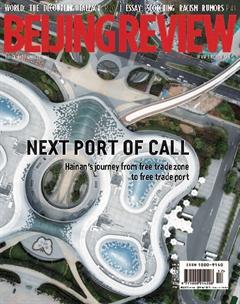A Deeper Blueprint
By Li Xiaoyang

With the novel coronavirus pandemic casting a shadow on economic growth worldwide, the first roadmap for improving the allocation of production factors outlines measures to give the market a bigger role in deciding where resources should be allocated.
The Communist Party of China Central Committee and the State Council, the cabinet, issued a guideline on April 9 to facilitate free and orderly flow of production factors and boost market vitality.
Land, labor, technological knowledge, capital and data are the major production factors. The government will make land management more flexible, encourage the flow of labor forces, boost technology and data exchanges and improve the capital market system. It will also make pricing mechanisms more marketoriented and ensure better resource allocation through digital technologies.
According to the National Development and Reform Commission (NDRC), despite progress, the productive factor market is not yet fullfl edged compared with the commodity market, where the pricing of over 97 percent of goods and services is market-based. This is due to institutional barriers that have weakened the role of the market in resource allocation. The new guideline says the institutional barriers will be removed to drive high-quality economic growth.
To boost the efficiency of production factors and cope with the impacts of the pandemic, overcapacity will be cut, especially heavily indebted zombie enterprises will be phased out, and technologies, funds and labor will be directed to high-quality industries to support the real economy, the NDRC said.
“The measures will improve the allocation of productive factors, give impetus to the economy and boost innovation-driven growth,”Lin Zhiyuan, Deputy Director of the Center for Macroeconomics Research at Xiamen University, told Economic Information Daily.
Reforms in pipeline
The guideline provides targeted measures for land management. The rural land expropriation system, through which the government takes over land for relocation and urbanization, is to be reformed, industrial land use policies adjusted and the land management mechanism made more fl exible.
“The dual structure of urban and rural areas in China has led to a mismatch between supply and demand,” Pan Helin, a senior researcher at the public policy think tank Pangoal Institution, told Beijing Review. “Cities have insufficient land for construction and face rising land prices. However, rural land can enter the urban market as land for construction only when it is converted into state-owned land through expropriation.”
As the supply of land becomes more fl exible, rental and affordable housing and new industrial zones will be built on the land lying idle in third- and fourth-tier cities and the land belonging to some state-owned enterprises. This will ease land constraints in large cities and curb the rise of housing prices, Xu Xiaole, chief analyst of Beike Real Estate Research Institute, told International Finance News.
Baosteel, the Shanghai-based steel manufacturer, provided a good example of this as early as in 2010. Baosteel stopped production in a downtown area and relocated its industrial chain. The area was later developed into the Changyang Campus, an innovation center that is now home to over 300 startups and small and medium-sized tech fi rms.
To promote the flow of labor forces, the long-followed household registration system will be reformed, especially in city clusters including the Yangtze River Delta region in the east and the Pearl River Delta region in the south. Domestic migrants will be able to register for residency in the cities where they work and get equal access to public services, such as healthcare and education. The traditional registration system allows people these services only in their birthplaces where they are registered and they lose the facility when they move to other cities in search of jobs. Also, equality will be ensured in the job market, working skill evaluation systems will be improved, and long-term vocational skill training provided.
Gao Ziping, a professor at the Shanghai Academy of Social Sciences specializing in human resources studies, told Global Times that easing the household registration control is in line with todays situation where there are frequent labor flows to city clusters for industrial development.
The government will also improve the stock market with better issuance, trading and delisting systems, develop the bond market, increase f inancial services and widen the opening up in the securities and futures market. This measure follows the scrapping of foreign ownership restrictions on securities, futures and fund management firms on April 1 to attract more foreign investment. While the market access for foreign financial institutions will be eased, domestic companies will be encouraged to trade in global f inancial markets.

However, while welcoming the reforms, experts say that the inherent difficulties need to be addressed specifically. Li Yujia, chief researcher of a housing policy research institution in Guangdong Province, south China, told International Finance News that the marketoriented allocation of land factors will face difficulty. “While rental housing can be built on idle land, commercial housing cant be. Therefore, the measures have to be extended to the commercial housing market to truly ease land strains,” Li said.
Also, according to Pan, the entry of rural land into the market will only moderately impact the property market in the short term. The income distribution between rural residents and local governments during land sales have to be made clearer and more transparent. Utilization of data also calls for more supporting measures. As Shen stressed, data is different from land, labor and capital as it can be used repeatedly. So more detailed rules are needed to identify the ownership of data IPR and accelerate the liquidation of data assets.
To better identify data owners, Pan suggests applying new technologies such as blockchain to trace the source.

